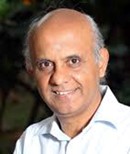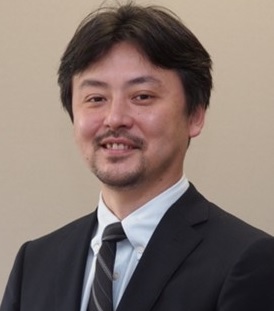Time: 11.30 AM to 1.30 PM (India Standard Time) or 3.00 to 5.00 PM (Japan Standard Time)
Chairs: Professor Praveen Kumar (IISc) and Professor Hiroshi Okada (TUS)
11.30 to 11.35 AM (India standard time), 3.00 to 3.05 PM (Japan standard time): Opening address by Professor Hiroshi Okada (TUS)
11.35 AM to 12.25 PM (India standard time), 3.05 to 3.55 PM (Japan standard time):
Speaker: Professor Akiyuki Takahashi, Professor at the Faculty of Science and Technology, Department of Mechanical Engineering (TUS)
Talk title: “A Fatigue Crack Growth Simulation System Considering Plasticity Induced Crack Closure Effects”
(40 minutes presentation, followed by Q&A and discussions)
12.25 to 12.30 PM (India standard time), 3.55 PM to 4.00 PM (Japan standard time): Short break
12.30 to 1.20 PM (India standard time), 4.00 to 4.50 PM (Japan standard time):
Speaker: Professor Narasimhan Ramarathinam, Professor at the Department of Mechanical Engineering (IISc)
Talk title: “Fracture Behavior and Ductility Enhancement in Metallic Glasses : Insights from Experiments and Simulations “
(40 minutes presentation, followed by Q&A and discussions)
1.20 to 1.30 PM (India standard time), 4.50 to 5.00 PM (Japan standard time):
Discussions and closing address by Professor Praveen Kumar (IISc)
Brief Biography of the speaker:

Professor R. Narasimhan: Professor Narasimhan received his Bachelor’s degree in Mechanical Engineering from Indian Institute of Technology, Madras, in 1982 and Masters and Doctoral degrees from California Institute of Technology, Pasadena, USA, in 1983 and 1986. He joined the Indian Institute of Science, Bangalore, in 1991, where he is presently Professor of Mechanical Engineering.
His research interests are Computational Solid Mechanics, Nonlinear and Dynamic Fracture Mechanics and Mechanics of Novel Materials. He is a Fellow of Indian National Science Academy, Indian Academy of Sciences and Indian National Academy of Engineering. Also, he has served as member of the Editorial Boards of International Journal of Fracture, Journal of the Mechanics and Physics of Solids and Mechanics of Materials. Webpage: https://mecheng.iisc.ac.in/people/r-narasimhan/
Talk title: “Fracture Behavior and Ductility Enhancement in Metallic Glasses : Insights from Experiments and Simulations “
Brief abstract of the talk:
Bulk metallic glasses (BMGs) are novel engineering materials but their structural application has been severely limited by poor fracture toughness and tensile ductility. This talk summarizes finite element simulation studies carried out to understand the mechanics of fracture in ductile and brittle BMGs as well as physical mechanisms that promote tensile ductility in two BMG architectures, viz., in-situ bulk metallic glass composites (BMGCs) and nanoglasses (NGs). The stress and shear band patterns around a notch tip in a ductile BMG as well as cavitation induced fracture in a brittle BMG are simulated using a Mohr-Coulomb type plasticity model. Using a non-local BMG plasticity model, it is shown that profuse plasticity occurs in NGs with fine grain size, while high hardening elongated dendrites with substantial volume fraction would make a BMGC ductile without any loss of strength.

Professor A. Takahashi: Professor Takahashi received his Bachelor’s and Master’s degrees in Engineering from Tokyo University of Science in 1998 and 2000, and Doctoral degree from University of Tokyo in 2003. He joined the Tokyo University of Science in 2003, where he is presently Professor of Mechanical Engineering.
His research interests are Computational Materials Science, Multiscale Materials Modeling, Fatigue and Ductile Fracture of Metals and Alloys. He is a board member of the Japan Society of Computational Engineering and Science, and a member of the Japan Society of Mechanical Engineers, Japan Association for Computational Mechanics, and International Association for Computational Mechanics. He is a deputy secretary general of 15th World Congress on Computational Mechanics (WCCM) and 8th Asian Pacific Congress on Computational Mechanics (APCOM).
Talk title: “A Fatigue Crack Growth Simulation System Considering Plasticity Induced Crack Closure Effects”
Brief abstract of the talk:
In this talk, two versions of fatigue crack growth simulation systems considering the plasticity induced crack closure effects are presented. The first version is based on the hybrid of the s-version finite element method (s-FEM) and a direct finite element simulation of plasticity near crack tips. Using the remarkable feature of s-FEM in the meshing process, the automatic fatigue crack growth simulation is realized. In addition, the crack opening level parameter is directly calculated using the elastic-plastic finite element method. Then, the parameter is used to account for the plasticity induced crack closure effects in the fatigue crack growth rate. The proposed simulation system is used to simulate the fatigue crack growth of surface crack under tension and bending. The numerical results are in good agreement with experimental results. The second version is based on a cohesive zone model (CZM), which is newly developed for fatigue crack growth simulations based on the Paris law. Using the proposed CZM, the fatigue crack growth behaviors with different loading profiles are simulated. The numerical results are consistent with the fatigue crack growth behavior observed by experiments.